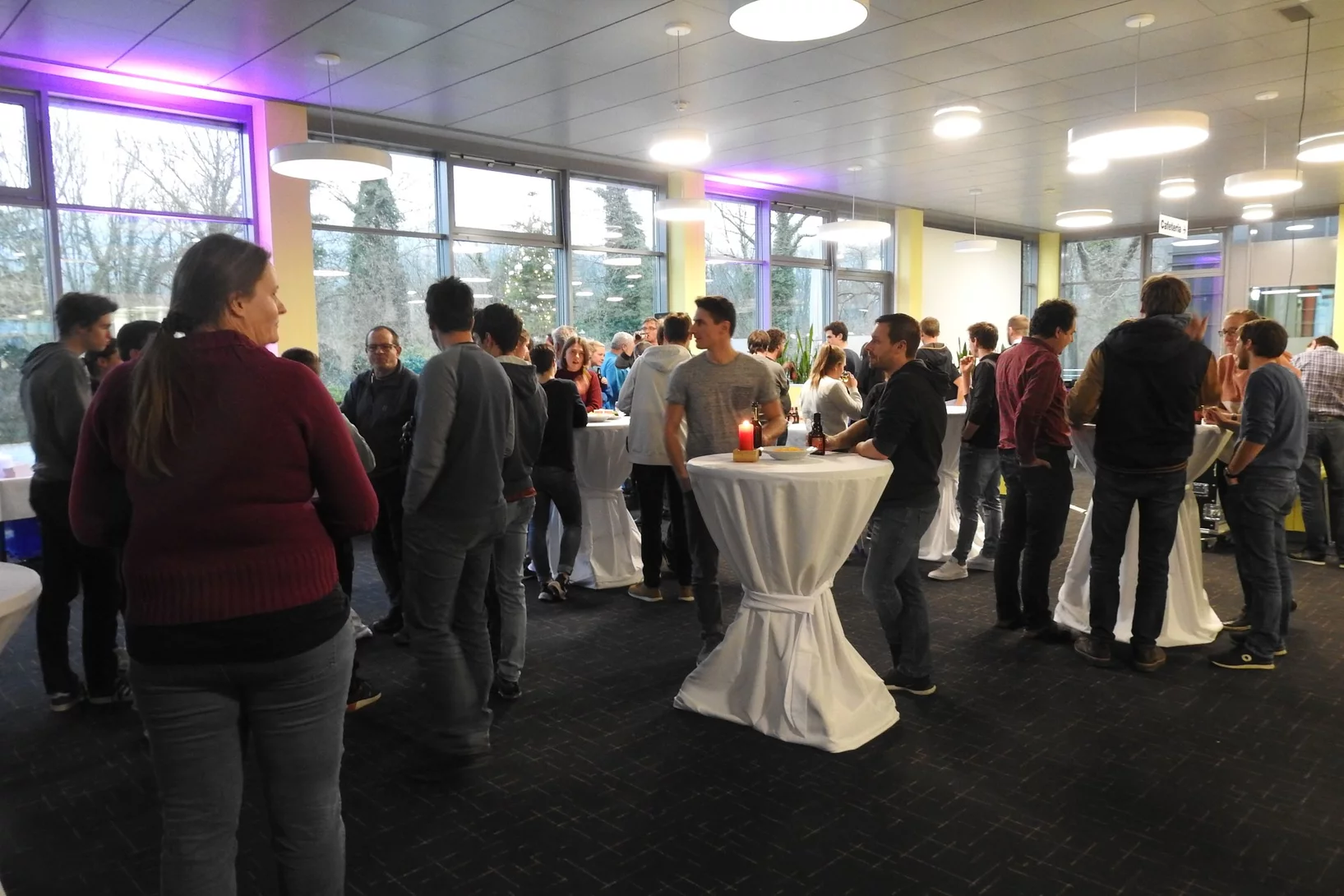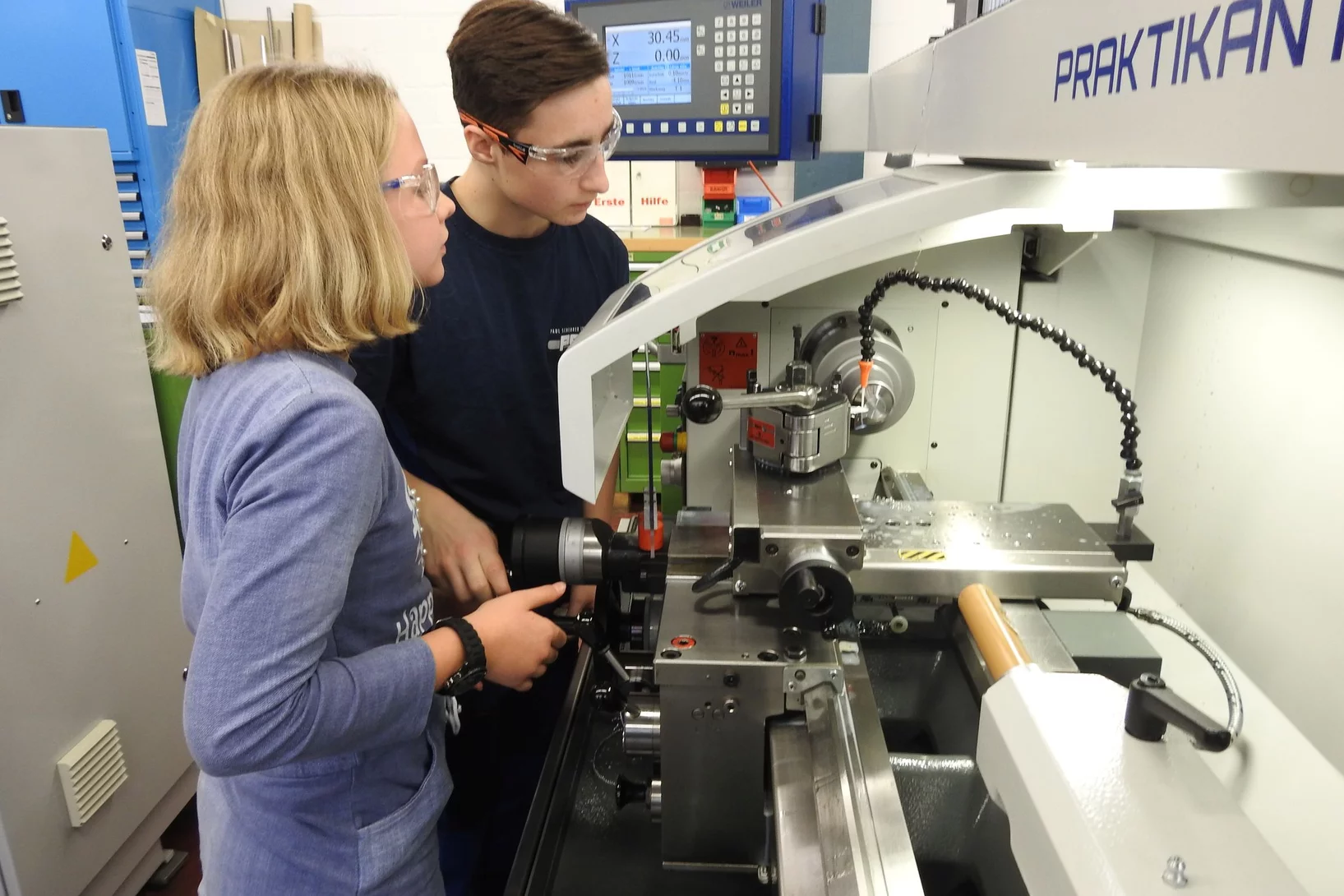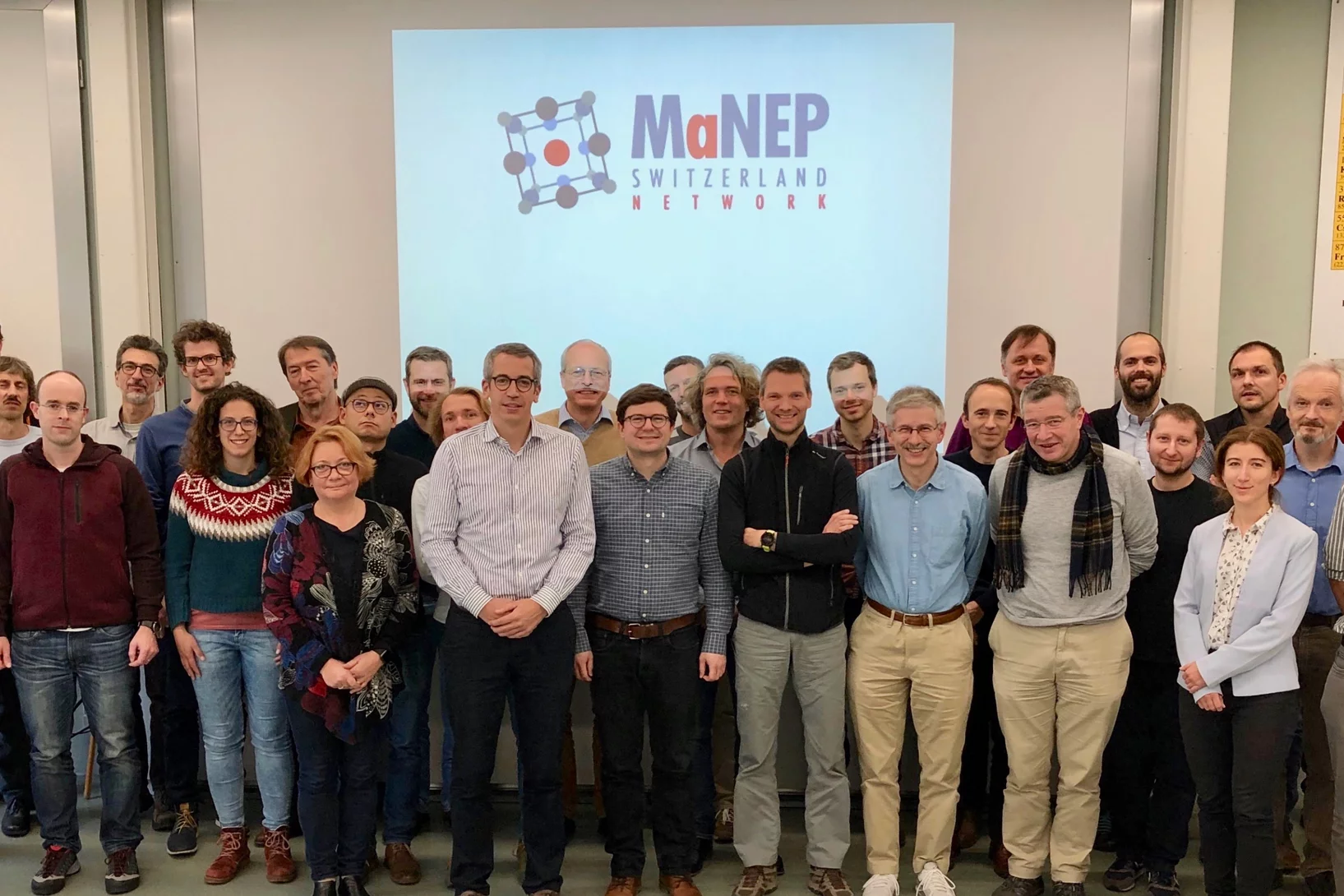Am PSI widmen sich mehrere Projekte wichtigen Forschungsfragen rund um das Coronavirus Sars-CoV-2 und den daraus resultierenden Erkrankungen. Wir informieren über Aktivitäten und Vorhaben, zum Beispiel zu Untersuchungen von Lungengewebe, zur Produktion von Proteinen und Antikörpern oder über Ideen für neue Forschung zu Covid-19.
Nützliche Links
5 000 000 000 000 000 Bytes von Villigen nach Lugano
Bei Untersuchungen winziger Strukturen mit Grossforschungsanlagen fallen am Paul Scherrer Institut PSI riesige Datenmengen an. Im Supercomputerzentrum CSCS in Lugano werden die Daten archiviert und die Forschenden nutzen den dortigen Supercomputer für ihre Simulationen und Modellierungen.
Fascinating colloquium about the 200 Swiss frank banknote
The designers of the new Swiss banknote series together with the scientific advisor Günther Dissertori from ETHZ gave a fascinating PSI-colloquium on the 200 Swiss Frank banknote.
Generation and measurement of ultralow-emittance electron beams at SwissFEL
The emittance is a fundamental parameter of particle distributions accounting for the average spread of the particles’ positions and momenta. We have generated and characterized intense ultralow-emittance electron beams, setting new standards for electron linear accelerators. The measurements have been carried out at the SwissFEL accelerator of PSI. SwissFEL is one of the few X-ray free-electron lasers (FELs) worldwide, which are cutting-edge research instruments to investigate matter with resolutions at the level of atomic processes.
2019 Highly Cited Researchers
Again in 2019: Three LAC researchers were highly cited.
ANAXAM has Officially Launched
Anaxam is a technology transfer center created as a collaboration between PSI, the FHNW, the SNI and the Kanton of Aargau. Created to provide simplified access for industry to the large research facilities at PSI and focused on delivering services to support Advanced Manufacturing, both in the improvement of existing products as well as with manufacturing processes. ANAXAM has Officially Launched today 2019.12.01.
Towards dynamic feedback control during time-resolved CT at TOMCAT
Researchers from the CWI in Amsterdam and the TOMCAT beamline have developed and implemented a real-time CT reconstruction, visualisation, and on-the-fly analysis approach to monitor dynamic processes as they occur. With the processing of multiple sets of CT slices per second, this represents the next crucial step towards adaptive feedback control of time-resolved in situ tomographic experiments. The results of this study were published in Scientific Reports on December 5, 2019.
Towards dynamic feedback control during time-resolved CT at TOMCAT
Researchers from the CWI in Amsterdam and the TOMCAT beamline have developed and implemented a real-time CT reconstruction, visualisation, and on-the-fly analysis approach to monitor dynamic processes as they occur. With processes of multiple sets of CT slices per second, this represents the next crucial step towards adaptive feedback control of time-resolved in situ tomographic experiments. The results of this study were published in Scientific Reports on December 5, 2019.
Jahresschlussapéro 2019
Am Mittwoch, 4. Dezember fand der Jahresschlussapéro in der OASE statt. Viele Lernende, Berufsbildnerinnen und Berufsbildner, wie auch weitere Gäste genossen den Anlass in der OASE. Der Leiter der Berufsbildung Paul Kramer hat das Jahr Revue passieren lassen.
Field-induced double spin spiral in a frustrated chiral magnet
Magnetic ground states with peculiar spin textures, such as magnetic skyrmions and multifunctional domains are of enormous interest for the fundamental physics governing their origin as well as potential applications in emerging technologies. Of particular interest are multiferroics, where sophisticated interactions between electric and magnetic phenomena can be used to tailor several functionalities.
The multi-layered physics of layered superconductors
Muon spin rotation experiments provide unique microscopic insight into the superconductivity and magnetism of transition metal dichalcogenides — and reveal complex and unconventional patterns, hinting towards a common mechanism for and electronic origin of ‘unconventional’ superconductivity.
Mehr Magnete, weichere Kurven: das Upgrade der SLS
Die Synchrotron Lichtquelle Schweiz SLS soll in den kommenden Jahren ein Upgrade bekommen: Die SLS 2.0. Der Umbau wird möglich durch neueste Techniken und wird eine Grossforschungsanlage schaffen, die für weitere Jahrzehnte den Bedürfnissen der Forschenden gerecht wird.
Spectroscopic disentanglement of the quantum states of highly excited dicopper molecules
Transition metals, characterized by their partially filled d-orbitals, provide the basis for many of the most relevant processes in chemistry, biology, and physics. Embedded as single atoms or in small clusters, they give rise to exceptional optical, chemical, and magnetic properties. So far, it has proven impossible to disentangle the complex network of excited quantum states, which greatly hinders predicting and controlling of material properties. We employed double-resonant four-wave mixing spectroscopy to quantitatively resolve the bright and perturbing dark quantum states of the neutral copper dimer.
Animal embryos evolved before animals
Detailed characterization of cellular structure and development of exceptionally preserved ancient tiny fossils from South China by synchrotron based X-ray tomographic microscopy at TOMCAT led an international team of researchers from the University of Bristol and Nanjing Institute of Geology and Palaeontology to the discovery that animal-like embryos evolved long before the first animals appear in the fossil record.
Christian Rüegg wird neuer Direktor des Paul Scherrer Instituts
Der Bundesrat hat am 27. November 2019 Christian Rüegg auf Antrag des ETH-Rates zum neuen Direktor des Paul Scherrer Institutes PSI gewählt. Der 43-Jährige tritt damit die Nachfolge von Thierry Strässle an, der das Institut seit Anfang Jahr ad interim führt. Rüegg ist zurzeit Leiter des Forschungsbereiches Neutronen und Myonen am PSI. Er wird sein neues Amt am 1. April 2020 antreten.
Christian Rüegg appointed new Director of the Paul Scherrer Institute
On 27 November 2019, at the recommendation of the ETH Board, the Federal Council has appointed Christian Rüegg as the new director of the Paul Scherrer Institute PSI. The 43-year-old will take over from Thierry Strässle, who has headed the institute on an interim basis since the beginning of the year. Mr Rüegg is currently head of the Neutrons and Muons Division at the PSI. He will take up his new position on 1 April 2020.
Medikamente mit Strahlkraft
Im Dienst der Gesundheit arbeiten Wissenschaftler am Paul Scherrer Institut PSI mit Radionukliden und entwickeln Wirkstoffe, um Krebsleiden zu behandeln und Tumore aufzuspüren. Ihre Forschung unterstützt Spitäler und ist für die Schweizer Industrie von grossem Interesse.
Distortion mode anomalies in bulk PrNiO3: Illustrating the potential of symmetry-adapted distortion mode analysis for the study of phase transitions
The origin of the metal-to-insulator transition (MIT) in RNiO3 perovskites with R = trivalent 4f ion has challenged the condensed matter research community for almost three decades. A drawback for progress in this direction has been the lack of studies combining physical properties and accurate structural data covering the full nickelate phase diagram. Here we focus on a small region close to the itinerant limit (R = Pr, 1.5K < T < 300K), where we investigate the gap opening and the simultaneous emergence of charge order in PrNiO3.
Der Bedarf an Radionukliden für die Krebstherapie ist gross
Radionuklide eröffnen neue Behandlungswege bei Krebs, die sehr effizient sind. Christian Rüegg, Leiter des Forschungsbereichs Neutronen und Myonen am Paul Scherrer Institut PSI, erklärt, welche Rolle die Schweizer Spallations-Neutronenquelle SINQ des PSI bei der Entwicklung eines entsprechenden Medikaments spielt.
Krebsmedikament aus der Neutronenquelle des PSI
Forschende des PSI stellen an der Neutronenquelle SINQ spezielle Radionuklide her, die bei der Entwicklung neuer und gezielt wirksamer Krebstherapien helfen. Dabei arbeiten sie eng mit den Kliniken des Umlands zusammen.
Workshop on the Physics of Fundamental Symmetries and Interactions
The 5th Workshop on the Physics of Fundamental Symmetries and Interactions (PSI2019) took place from 20 to 25 October 2019 at PSI, bringing together 200 scientists from all over the world working on some of today’s most precise particle-physics experiments at the low-energy frontier.
Zukunftstag 2019
Am Donnerstag, 14. November haben 129 Kinder am Nationalen Zukunftstag des PSI teilgenommen. 57 Mädchen durften am Vormittag und 72 Jungs am Nachmittag 2 Stationen aus 12 Möglichen besuchen. Danke an alle engagierten Helferinnen und Helfer!
The X-ray Tomography Group welcomes Dr. Nazanin Samadi as Post Doc
Dr. Nazanin Samadi will help develop tools for comprehensive simulation of tomography beamline design and will contribute in the technical design report of the future TOMCAT 2.0 beamline upgrade. Before joining the group, she was a PhD student at the University of Saskatchewan in Canada.
Arbeiten mit einer Hörbehinderung
Im Leitfaden "Entwicklung und Anpassung von Diversity & Inclusion Richtlinien mit Fokus Hörbehinderung" wurde unser Automatiker-Lernende Andrin S. zu seinen Erfahrungen als Mitarbeitenden mit Hörbehinderung interviewt. Lesen Sie das interessante Interview auf Seite 14.
Pinning down the proximate Kitaev spin liquid
A study of the extended Kitaev model on the honeycomb lattice that factors in Kitaev, Heisenberg and off-diagonal symmetric interactions provides both a definitive answer on proximate Kitaev states and an essential guide to the physics of candidate Kitaev materials.
MaNEP Materials Discovery Workshop and Forum Meeting at the University of Bern
The MaNEP Network met at the University of Bern, Department of Chemistry and Biochemistry, for a Workshop on Materials Discovery and its annual Forum Meeting. The community discussed potential future joint initiatives and the role of MaNEP.
Giulia Stefenelli wins Swiss Aerosol Award 2019
Award conferred by SwissLung.org during the award ceremony in Berne, Switzerland
Faserverstärkte Verbundstoffe schnell und präzise durchleuchten
Forschende des Paul Scherrer Instituts PSI haben eine neues Verfahren entwickelt, mit dem sich faserverstärkte Verbundwerkstoffe präzise durchleuchten lassen. Das könnte helfen, bessere Materialien mit neuartigen Eigenschaften zu entwickeln.
Dr. Anne Bonnin got tenured
Congratulations to Dr. Anne Bonnin for having been tenured. Anne spent 2 years of post-doc and 4 years as beamline scientist at TOMCAT.
Transmission measurement at the Bernina branch of the Aramis Beamline of SwissFEL
An international collaboration consisting of metrology and photon diagnostics groups Germany, the U.S.A., Switzerland, and Japan performed a set of cross-calibration measurements of optical properties on the Bernina branch of the Aramis beamline [1]. The collaboration saw the DESY-developed gas detector, a novel diamond detector from Brookhaven, and a room temperature radiometer from AIST in Japan placed at the Bernina end station and measure the absolute intensity of the FEL light as it passed through the optical elements. The cross-calibrated measurements used in conjuction with the photon beam intensity-gas (PBIG) monitor at the front end of the Aramis beamline to characterize the performance of the optical components on the Bernina branch and then compare them to the expected theoretical values. The measurements were performed at photon energies of 6.08 and about 7.22 keV.
Second Mu3e DAQ Week in Mainz
Data Acquisition experts from all subsystems got together in the Mu3e DAQ lab in Mainz to integrate hardware, firmware and software into a common system. For the first time, we ran the full Mu3e timing and reset system and in general made good progress towards common data taking at high rates.



























